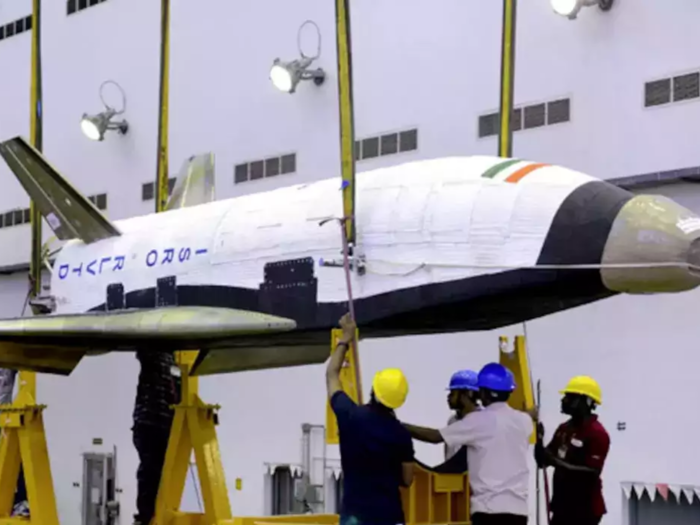In a successful test conducted at the Aeronautical Test Range (ATR), Chitradurga, Karnataka, the Indian Space Research Organisation conducted the Reusable Launch Vehicle Autonomous Landing Mission (RLV LEX). “With LEX, ISRO succeeded in achieving the autonomous landing of a space vehicle”, the agency said in a statement.
A winged body has been carried to an altitude of 4.5 km by a helicopter and released for an autonomous landing on a runway, which is a world first.
It is essentially a space plane with a low lift-to-drag ratio, so a high glide angle approach was necessary to reach 350 kmph, which required landing at high speeds. As an underslung load, the RLV was lifted to 4.5 km above the sea level by a Chinook helicopter of the Indian Air Force (IAF) at 7:10 am IST.
The RLV was released in mid-air, at 4.6 km down range, after reaching the predetermined pillbox parameters based on the RLV’s Mission Management Computer command.
The autonomous release of RLV marked the success of its approach and landing maneuvers, culminating in a precisely timed, unmanned landing on the ATR air strip at 7:40 AM IST. All parameters were properly managed to mirror those that would be experienced by a Space Re-entry vehicle during its return trip, including Ground relative velocity, sink rate of Landing Gears, and precise body rates.
Several state-of-the-art technologies were required for the RLV LEX, including accurate navigation hardware and software, pseudolite system, Ka-band radar altimeter, NavIC receiver, indigenous landing gear, honeycomb fins, and brake parachute system. In addition to the indigenous systems, ISRO developed localized navigation systems based on pseudolites, instruments, and sensor systems.
With a Ka-band Radar Altimeter, accurate altitude information was obtained from the Digital Elevation Model (DEM). Prior to flight, extensive wind tunnel tests and CFD simulations were performed to characterize the RLV’s aerodynamics. According to the statement, “Adapting contemporary technologies developed for RLV LEX makes other ISRO operational launch vehicles more cost-effective”.
In May 2016, ISRO demonstrated the re-entry of its winged vehicle RLV-TD in the HEX mission. As part of its development of Reusable Launch Vehicles, the vehicle landed on a hypothetical runway over the Bay of Bengal in HEX. A precise landing on a runway was not included in the mission.
A high speed (350 kmph) landing was achieved during the LEX mission’s final approach phase, which coincided with the return flight path. A series of engineering model trials and captive phase tests followed the LEX’s initial integrated navigation test in 2019.
A number of institutions contributed to this test, including ISRO, IAF, CEMILAC, Aeronautical Development Establishment (ADE), and Aerial Delivery Research and Development Establishment (ADRDE). A number of sorties were conducted by the IAF team and the Project team to perfect the achievement of release conditions. Secretary in the Department of Space and ISRO Chairman S Somanath were among the witnesses to the test.
Also Read:

2 Comments